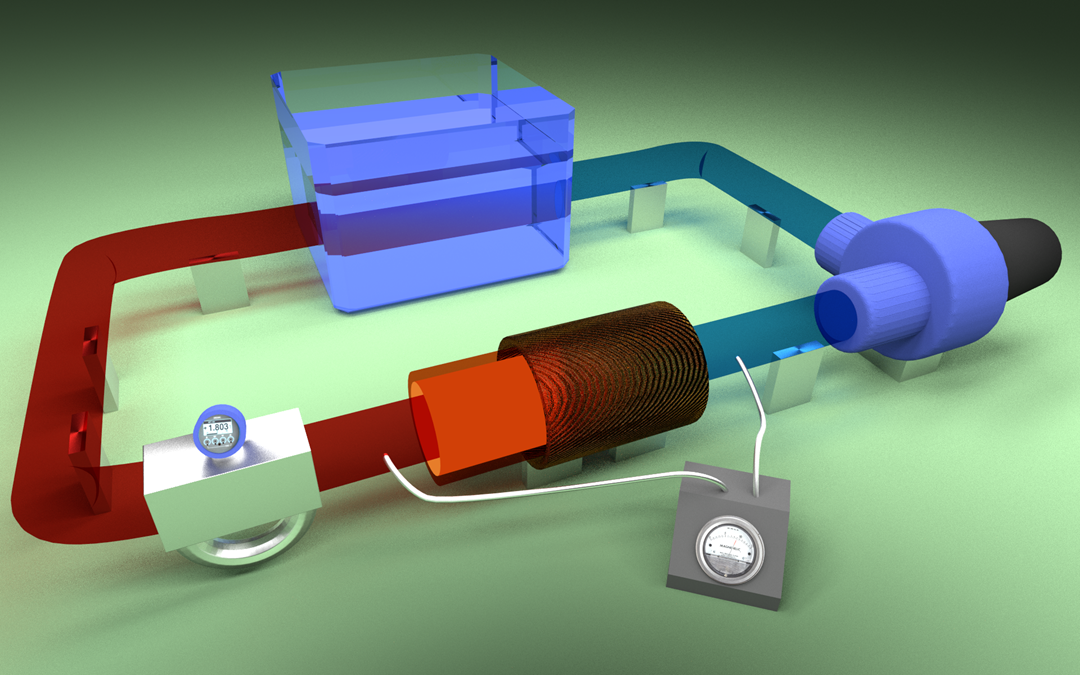Cooling is a crucial aspect of electronics design, all the way from high-power industrial applications to personal computers. Cooling means, simply put, to move heat from the hot device to the cooler environment. In high performance applications, this is often achieved by circulating a fluid between the device and the environment using a mechanical pump.
A nanofluid is a liquid which has been added a large amount of extremely small particles, called nanoparticles. Such fluids have been shown to have enhanced properties for heat transfer applications, such as an increased thermal conductivity. If the added particles are magnetic, we get a special kind of nanofluid called ferrofluid, which may be manipulated by magnetic fields. The ability of such fluids to be affected by magnetic fields depends on temperature, and this leads to the possibility of making something called thermomagnetic pumps. This pump can circulate the cooling fluid without any moving parts.
Generally we see application potential in cooling systems where reliability and size/weight-efficiency are important concerns, due to remote and hazardous localization. Examples include the cooling of high-power electronics in subsea installations and offshore wind turbines.
The main goals of FerroCool are:
- To design and build an experimental rig that can be used for future experimental campaigns
- Run experiments to measure heat transfer in ferrofluids
- Perform a study of possible applications for the cooling concept
The work requires that we combine several fields of science, such as numerical and applied mathematics, electromagnetism, statistical mechanics, fluid mechanics, thermodynamics, and nanotechnology and colloidal chemistry. The work will be mostly experimental, but it will also consist of applying mathematical models and running numerical simulations.
Relevant links:
